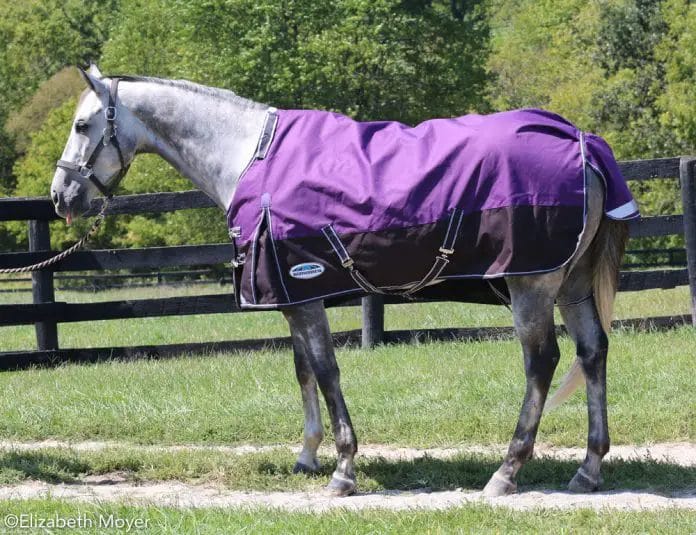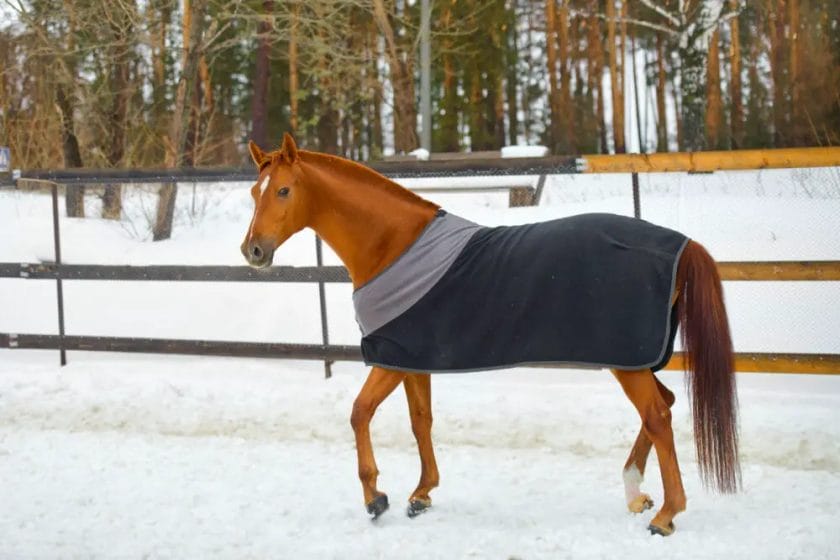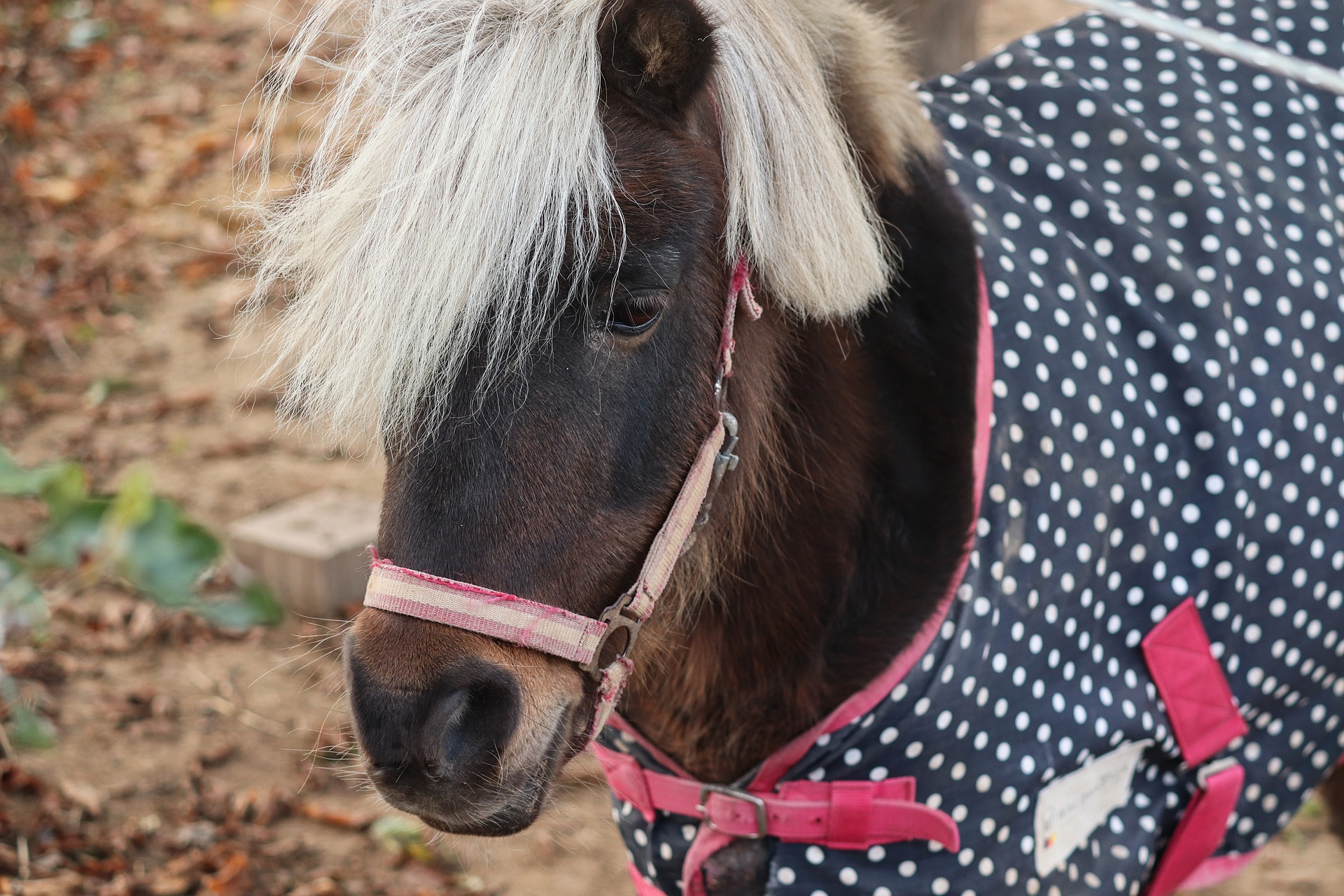A properly fitting horse blanket is essential for the comfort and well-being of your equine companion. The right fit ensures that the blanket stays in place and provides the necessary protection against the elements.
The blanket should fit snugly around the horse’s neck and shoulders, without restricting their movement. It should cover the horse’s body from the withers to the tail, with enough room for them to move and stretch comfortably.
When checking the fit, make sure the blanket doesn’t slide back or shift to the side. It should sit straight and securely on the horse’s back. Additionally, ensure that the blanket is not too tight around the chest or hindquarters, as this can cause rubbing and discomfort.
Properly adjustable straps and fastenings are crucial for achieving the perfect fit. Adjust the leg straps and belly surcingle so that they are snug but not overly tight. This will prevent the blanket from slipping or becoming too loose, providing optimal comfort for your horse.
Remember to regularly check the fit of the blanket as your horse’s weight and body shape can change over time. By ensuring a proper fit, you are helping to keep your horse warm, protected, and happy throughout the colder months.

Finding the Right Size Horse Blanket
When it comes to keeping your horse comfortable and protected during the colder months, a properly fitting horse blanket is essential. However, finding the right size can be a bit challenging if you’re not familiar with how to measure your horse and choose the correct blanket size. In this section, we will guide you through the process of finding the perfect fit for your horse’s blanket.
Measuring your Horse
The first step in finding the right size horse blanket is to accurately measure your horse. Here’s how you can do it:
- Start by measuring your horse’s length from the center of their chest to the center of their tail. This measurement will help you determine the blanket size.
- Next, measure your horse’s height from the highest point of their withers to the ground. This measurement will help you choose the correct blanket drop.
Choosing the Right Blanket Size
Once you have measured your horse, it’s time to choose the right blanket size. Keep in mind that different brands may have slightly different sizing charts, so it’s always a good idea to consult the specific brand’s size guide for accuracy. However, here are some general guidelines to help you get started:
| Horse Length | Blanket Size |
|---|---|
| 60-64 inches | Small |
| 66-70 inches | Medium |
| 72-76 inches | Large |
| 78-82 inches | X-Large |
| 84-88 inches | XX-Large |
Remember that the blanket should fit comfortably without being too tight or too loose. It should cover your horse’s withers, back, and hindquarters, providing adequate protection from the cold weather.
Considering Blanket Drop
In addition to choosing the right blanket size based on your horse’s length, you should also consider the blanket drop. Blanket drop refers to the length from the center of the blanket’s back seam to the bottom edge of the blanket.
The blanket drop will vary depending on the type of blanket and the intended use. For turnout blankets, the drop should be longer to provide more coverage and protect your horse from the elements. Meanwhile, stable blankets typically have shorter drops since they are designed for indoor use.
Trying the Blanket on your Horse
Once you have selected a blanket that matches your horse’s measurements, it’s time to try it on. When fitting the blanket, make sure it sits snugly on your horse’s withers and back without being too tight or restrictive. Check that the straps and buckles can be securely fastened and that the blanket doesn’t slide or shift when your horse moves.
Summary
Choosing the right size horse blanket is essential for your horse’s comfort and well-being during the colder months. By accurately measuring your horse and considering the blanket drop, you can ensure a proper fit. Remember to consult the specific brand’s size guide for accuracy, and always try the blanket on your horse to check for proper fit and functionality.

Proper Fit and Function of a Horse Blanket
A horse blanket is an essential piece of equipment that provides protection and comfort to horses in various weather conditions. It is important to ensure that the horse blanket fits properly and serves its intended function. This article will discuss the proper fit and function of a horse blanket, including the key considerations for selecting the right size, style, and material.
Selecting the Right Size
When choosing a horse blanket, it is crucial to select the right size to ensure a proper fit. A blanket that is too small can restrict the horse’s movement and cause discomfort, while a blanket that is too large may slip off or create potential hazards. To determine the correct size, measure your horse from the center of the chest to the tail. This measurement will help you choose the appropriate blanket length.
In addition to the length, it is important to consider the horse’s build and weight. Some blankets are designed for specific body types, such as narrow or broad shoulders. It is recommended to consult the manufacturer’s size chart or seek the advice of a knowledgeable professional to ensure the best fit for your horse.
Understanding Different Styles
There are various styles of horse blankets available, each designed to serve different purposes and provide specific levels of warmth and protection. The most common styles include turnout blankets, stable blankets, and sheets.
Turnout blankets are designed for outdoor use and offer the highest level of protection against harsh weather conditions. They are typically waterproof, wind-resistant, and breathable to keep the horse comfortable. Stable blankets, on the other hand, are intended for indoor use and provide warmth and comfort in more moderate temperatures. Sheets are lightweight blankets that offer minimal protection and are often used for layering or as a barrier against insects.
Consider the climate, the horse’s living conditions, and the intended use of the blanket when selecting the appropriate style. It is also worth noting that some blankets come with additional features such as neck covers or detachable hoods for added protection.
Choosing the Right Material
The material of the horse blanket plays a significant role in its functionality. Commonly used materials include nylon, polyester, and fleece.
Nylon is a durable and water-resistant material that offers excellent protection against the elements. It is a popular choice for turnout blankets. Polyester is another durable option that provides warmth and breathability. It is often used in stable blankets and sheets. Fleece is a soft and insulating material that helps to keep the horse warm and comfortable. It is commonly used as a lining in blankets.
When selecting the material, consider the horse’s specific needs and the climate. Additionally, ensure that the material is easy to clean and maintain to prolong the life of the blanket.
Maintaining and Inspecting the Blanket
To ensure the longevity and effectiveness of the horse blanket, regular maintenance and inspections are necessary. After each use, remove any dirt or debris from the blanket and allow it to dry thoroughly before storing. It is important to repair any damages such as rips or loose straps promptly. Regularly inspect the blanket for signs of wear and tear, and replace it if necessary to maintain the horse’s comfort and protection.
Summary
A properly fitting horse blanket is essential for the comfort and well-being of the horse. Selecting the right size, style, and material are key considerations when choosing a horse blanket. Regular maintenance and inspections will help ensure that the blanket remains functional and provides the necessary protection. By following these guidelines, horse owners can ensure that their horses are properly outfitted for various weather conditions while maintaining their comfort and safety.

Common Mistakes when Fitting a Horse Blanket
A horse blanket is an essential piece of equipment for keeping your horse warm and protected during cold weather. However, fitting a horse blanket can be a bit challenging, especially for beginners. In this section, we will discuss some of the common mistakes that people make when fitting a horse blanket and how to avoid them.
1. Choosing the Wrong Size
One of the most common mistakes is choosing the wrong size horse blanket. A blanket that is too small will constrict your horse’s movement and cause discomfort, while a blanket that is too large can slip and become a safety hazard. To ensure the perfect fit, measure your horse accurately from the center of the chest to the tail and consult the manufacturer’s sizing chart.
2. Ignoring the Blanket’s Style
Horse blankets come in different styles, such as stable blankets, turnout blankets, and sheets. Each style serves a specific purpose, and using the wrong type of blanket can lead to discomfort or even injury for your horse. It’s important to understand the intended use of the blanket and choose the appropriate style for the weather conditions and your horse’s needs.
3. Improper Leg Strap Adjustment
Leg straps are an essential part of a horse blanket, as they help keep the blanket in place. One common mistake is adjusting the leg straps too loosely, which can result in the blanket shifting and rubbing against the horse’s body. On the other hand, adjusting them too tight can restrict your horse’s movement and cause discomfort. Ensure that the leg straps are snug but not too tight, allowing for free movement of the horse.
4. Neglecting to Check for Rub Marks
When fitting a horse blanket, it’s crucial to regularly check for rub marks or sores caused by friction between the blanket and the horse’s body. Neglecting this can lead to discomfort and potential health issues. Take the time to inspect your horse’s body daily for any signs of rub marks and adjust the blanket or use appropriate padding to prevent further irritation.
5. Overlooking Adjustability Features
Many horse blankets come with adjustable features, such as shoulder gussets and surcingles. These features allow for a better fit and increased comfort for your horse. However, some horse owners overlook these adjustability options and leave the blanket in its default setting. Take advantage of these features to ensure a proper fit and prevent any discomfort or rubbing.
6. Not Checking for Proper Fit Regularly
Lastly, one common mistake is assuming that a horse blanket will continue to fit perfectly over time. However, horses can change shape due to weight gain or loss, which can affect the fit of the blanket. It’s essential to check the fit of the blanket regularly and make any necessary adjustments to ensure your horse’s comfort and well-being.
In summary, fitting a horse blanket correctly is crucial for your horse’s comfort and safety. Avoiding common mistakes such as choosing the wrong size, ignoring the blanket’s style, improper leg strap adjustment, neglecting to check for rub marks, overlooking adjustability features, and not checking for proper fit regularly will help ensure that your horse stays comfortable and protected in their blanket.
Importance of Proper Blanket Fit for Horse Comfort
Horse owners and riders understand the importance of providing their equine companions with the utmost care and comfort. One essential aspect of their well-being is ensuring that their blankets fit properly. A properly fitted blanket not only helps keep horses warm and protected from harsh weather conditions, but it also minimizes the risk of discomfort, chafing, and injury.
1. Prevents Rubbing and Chafing
Ill-fitting blankets can cause rubbing and chafing on a horse’s sensitive skin. When a blanket is too tight or too loose, it can create friction as the horse moves, leading to painful sores and irritation. These sores can become a breeding ground for bacteria and may require veterinary attention. By investing in blankets that are the right size and shape for your horse, you can prevent these unpleasant skin issues.
2. Provides Optimal Warmth
A properly fitting blanket effectively traps heat close to the horse’s body, providing optimal warmth during cold weather. If the blanket is too loose, cold air can circulate underneath, reducing its insulating capabilities. On the other hand, a tight-fitting blanket may restrict the horse’s movement and cause discomfort. By ensuring a proper fit, you can maintain the right temperature for your horse, keeping them cozy and comfortable.
3. Allows Natural Movement
Horses are highly active animals, and it is crucial to allow them freedom of movement while wearing a blanket. A well-fitted blanket should not impede the horse’s range of motion. If a blanket is too tight across the shoulders or hindquarters, it can restrict their natural movement, leading to discomfort, muscle tension, and potential injuries. By selecting blankets that are designed specifically for your horse’s body shape, you can provide them with the freedom to move comfortably.
4. Avoids Potential Injuries
Improperly fitted blankets can pose the risk of various injuries to horses. Blankets that are too loose can slip and become tangled, potentially causing the horse to trip or fall. Additionally, an ill-fitting blanket with straps or buckles that are too tight can dig into the horse’s skin, causing pain and even injury. Choosing blankets with adjustable features and ensuring a snug fit can help minimize these risks and keep your horse safe.
5. Enhances Overall Well-being
Proper blanket fit contributes to the overall well-being and happiness of horses. When horses are comfortable in their blankets, they are more likely to exhibit positive behavior, such as being calm and cooperative during grooming and handling. Comfortable horses also tend to have better overall health, as they are less stressed and more content. By prioritizing proper blanket fit, you are actively promoting your horse’s physical and emotional well-being.
Summary
Proper blanket fit is essential for ensuring the comfort and well-being of horses. It helps prevent rubbing and chafing, provides optimal warmth, allows for natural movement, avoids potential injuries, and enhances their overall happiness. By selecting blankets that fit correctly and paying attention to adjustments and changes in your horse’s body shape, you can ensure their utmost comfort throughout the year.
FAQs
How should a horse blanket fit?
A horse blanket should fit snugly without being too tight or too loose. It should cover the horse’s body from withers to tail and reach down to the horse’s belly. The blanket should not restrict the horse’s movement and should allow for proper range of motion. It should also have enough room for the horse to comfortably lift its head and neck.
Conclusion
In conclusion, proper fit is crucial when it comes to horse blankets. A well-fitting blanket not only provides comfort and warmth for the horse but also helps to prevent rubbing and discomfort. It should fit snugly, allowing for freedom of movement without being too tight or restrictive.
When fitting a horse blanket, consider the size and shape of your horse, as well as the type of blanket you are using. Measure your horse accurately and choose a blanket that matches their measurements. Adjust the straps and buckles to ensure a secure fit, and regularly check for any signs of discomfort or rubbing.
Remember, a properly fitted horse blanket is essential for your horse’s well-being and will ultimately contribute to their overall health and happiness.
